BLUF: On Saturday, Wagner’s head confirmed his troops captured Bakhmut, bringing an end to a 9-month-long battle for the city. Russian gains in the city coincided with Ukrainian reported gains on the Bakhmut flanks, which may hinder Wagner’s future operations in the western direction; Neither side made any major territorial gain in other parts of Ukraine; Moscow increased the tempo of its air and missile attacks, but they are still too rare too reduced in size to delivered desired results of crippling UA air defence capability;
Key takeaways from last week’s developments:
Russian forces claimed to have captured Bakhmut, thus ending a 9-month-long battle for the city;
Russians in Bakhmut occupy the lowlands, and any movement toward Chasiv Yar will involve an uphill battle against Ukrainian fortified positions west of Bakhmut;
Last week brought no confirmed changes in the Ukrainian counterattacks on south and north of Bakhmut, although Ukrainian sources claimed progress was made on both axes;
Russians launched two sizable air and missile strikes, but Kyiv claimed to have intercepted 98 per cent of incoming missiles; The increase in the regularity of Russian strikes is nevertheless notable;
Russians continued ground and artillery attacks in the Kharkiv Oblast, and although Russian sources claimed they captured a village in the region, the overall operational-strategic situation remained unchanged;
No frontline changes were reported in the Luhansk Oblast, where all Russian attacks were repelled; No changes in the Ukrainian posture were recorded;
Ukrainians may have made some gains near Kruta Balka in the Avdiivka area, but in general, the frontline did not shift in the Donetsk Oblast;
The same pertains to the Zaporizhzhia Oblast, where both sides’ activities were somehow subdued; Russian sources claimed that Ukrainians deployed two newly-established army corps to the region and now stationed between 50,000-65,000 soldiers in the oblast;
Ukrainians made some gains on the Dnipro Delta islands in the Kherson Oblast;
The posture of the Belarusian Armed Forces remained unchanged; The readiness check continued, but its intensity was reduced;
Executive summary
Undoubtedly, the most important event of the previous week was the Wagner claim that Bakhmut had been captured. On Saturday, Yevgeny Prigozhin, the organisation’s head, said that his forces completely captured the city by seizing the last multi-story apartment building in southwestern Bakhmut. He also added that his troops would withdraw from Bakhmut on 25MAY (Thursday), when Russian conventional forces are to take over control over the town. This Russian victory came despite numerous Prigozhin’s claims about Wagner’s pullback from the city. Yet, irrespective of these calls, the opposite always happened. Wagner would continually advance, despite reportedly suffering from shell hunger and heavy losses. As such, we advise caution regarding any announcements made by Prigozhin regarding the cessation of activities. While some sort of pause is possible, the likelihood of Wagner completely withdrawing from the battlefield is presently small.
From the operational perspective, the fall of Bakhmut changes little. The city is located in the lowlands (see the map below), and Russians will face an uphill battle (literally and figuratively) ) if they decide to push west. However, while untrained Wagner convicts and other personnel were (more) suitable for urban operations, their utility in open terrain without armoured vehicles will be put to a more difficult test.
Both sides came from this battle badly damaged. According to Russian sources, Ukrainians deployed many units to Bakhmut over the last few months, significantly degrading their combat effectiveness. However, this view is partly true. While many units were indeed deployed into the area, Ukrainians initially rotated battalions from these brigades, allowing them to maintain brigade-level cohesion. However, at some point, only 3-4 brigades plus TDF units were permanently deployed to Bakhmut. These units, which received replacements regularly, were indeed badly mauled over. It is difficult to estimate the size of these replacements, but suffice it to say in February, Ukrainian losses amounted to 3,000-4,000 personnel. Our understanding is that Ukraine does not suffer from manpower problems. But access to artillery munitions is the problem. Kyiv dragged itself into a battle, which could have consequences for its ability to stock up on appropriate levels of artillery munitions during the counteroffensive.
Secondly, the battle’s impact on Russian operational formations was minimal, as Wagner bore the brunt of the fighting. With reported limited access to recruits, the organisation may find itself sidelined and unable to generate new forces capable of conducting successful offensive operations. However, we also need to stress that had it not been for Wagner, Moscow’s gains since the capture of Lysychansk would have been minimal. It was Wagner who propelled Russian gains throughout the winter. Indeed, the successful battle for Bakhmut is the biggest Russian victory since JUL22.
According to Colonel-General Oleksandr Syrskyi, the Ukrainian Ground Forces Commander, the small area Ukrainians still controlled in Bakhmut as of Sunday could allow them to reenter “the city in case of a change in the situation”. He also added that Ukrainians continued to advance on the flanks and were forming the tactical encirclement of the city. Nothing indicates that this is the case. In this war, Ukrainians avoided offensive urban operations, and the likelihood of them now conducting a counteroffensive in Bakhmut is minimal. At the same time, despite numerous claims about the progress on the flanks, no information is available to confirm Ukrainian gains north and south of Bakhmut. As such, talks about tactical encirclement are premature and probably reflect a hasty response to the city’s fall.
Apart from Bakhmut, the frontline remained unchanged across Ukraine. There were several reports about Russian gains in the Kharkiv Oblast and a small Ukrainian progress in the Donetsk Oblast. However, information about these events remained unverified.
Moscow increased the tempo of air and missile strikes. Before March, they conducted fortnightly large-scale attacks utilising 50+, 70+ or 100+ missiles. Now attacks occur more often, but they also include significantly fewer missiles. Russians appear to go after Ukrainian Armed Forces concentration areas and air defence sites. The 16MAY attack on a Patriot battery in Kyiv was unsuccessful in that it only caused minimal damage to one launcher, which was placed back into service by week’s end. Other strikes targeting other areas were also unsuccessful. Even assuming that the interception rate claimed by Ukrainians is too high (and it probably is), Kyiv still has a sufficiently high rate to render these missile attacks unsuccessful. Unless the tempo and intensity of missile strikes significantly increase, we do not expect Russian deep air and missile attacks to deliver an operational or strategic effect in this war.
The situation at selected axes and directions
Kharkiv direction
The situation in the Kharkiv Oblast remained deadlocked last week as neither side made confirmed gains. On Monday, Russian sources claimed that Russian units captured Masiutivka and that a bridgehead had been established on the right bank of the Oskil River. Although they provided no visual evidence to support these assertions, a Ukrainian source confirmed the loss of the village to the attackers. Until we obtain visual confirmation, we will not mark the settlement as under Russian control in our Scribble Map.
According to a Russian source, the UAF tried to counterattack on Thursday west of Masiutivka. On 18 MAY, battles also occurred to the southwest of Lyman Pershyi, where the Ukrainian 40th Independent Rifle Battalion is stationed. Elements of the battalion were also reportedly redeployed to strengthen Dvorichna and Novomlynsk. In Tyshenkivka, an ammunition depot serving the Ukrainian 14th Mechanised Brigade was reportedly destroyed.
Assuming that the Masiutivka was taken, the overall situation in the region did not change. This is the first Russian territorial gain in the Kharkiv Oblast since early February when Dvorichne was captured. Since then, Russian attempts to reach Dvorichna have been unsuccessful. At the same time, we have seen no indications to suggest that Russians are preparing for a major ground attack in the Kharkiv Oblast.
Last week, they launched no ground attacks from Russian territory.
But they continued artillery and missile strikes on villages across the region. They mainly focused on Kamyanka, Krasne Pershe, Novomlynsk, Dvorichna, Starytsa, Podoly, Fyholivka, Zapadne and Tabaivka.
Throughout the week, the Russian MoD reported numerous Ukrainian losses in the Kharkiv direction. Russians claimed to have shot down a Mi-8 helicopter and destroyed two ammunition depots near Berestove and Kyslivka, the 206th Territorial Defence Battalion’s command post in Vovchansk, the 122nd Territorial Defence Brigade’s command post near Hatyshe, to name a few.
We continue to expect no changes in this region in the short term (until the end of May). No reports suggest that either side was preparing its forces for more organised and large-scale attacks.
Luhansk direction
Last week delivered no frontline changes in the Luhansk Oblast. Positional battles continued along the Ploshchanka – Bilohorivka line. According to Artem Lysohor, the Luhansk military administration head, Russian units continued to increase artillery strikes on settlements along the frontline, although he provided no data to quantify this surge.
The situation in the Svatove area remained stable. All Russian attacks were repelled near Stelmakhivka.
No changes occurred near Novoselivske and Kuzemivka, where positional battles continued.
No changes occurred in the Makiivka, Ploshchanka and Chervonopopivka areas. According to Russian and Ukrainian sources, Russians made several attempts to shift the frontline near Nevske and Makiivka, but presumably, all assaults were repelled. In fact, neither Russian nor Ukrainian sources reported any changes in his area.
Battles near Kreminna continued. According to Russian sources, the attackers managed to advance slightly in the Serebryansky forest near Shypylivka, which is confirmed by the Ukrainian source.
Ukrainians may have counterattacked near Bilohorivka and recaptured some Russian strongholds, but we assess these actions as having a tactical value and not part of a larger counterattack.
Interestingly, Roman Vlasenko, the Sievierodonetsk administration head, claimed that Russians nevertheless expect more Ukrainian attacks in the near future in this region (Bilohorivka-Lysychansk-Severodonetsk). At the same time, Russians are moving due to fears of being targeted by Ukrainian high-precision munitions, making it difficult to concentrate their presence.
On 15MAY, the Ukrainian source claimed that the Luhansk Higher Military Aviation School of Navigators was targeted, which has housed LPR forces since 2014.
According to Serhiy Cherevaty, the Eastern Group of the Ukrainian Armed Forces, last week, between Monday and Friday, Russians fired 2,338 times on Ukrainian positions in the Lyman – Kupyansk, the highest number across Ukraine. They also conducted 19 ground attacks, all of which were repelled, and more than 60 air strikes. Ukrainians claimed to have killed over 200 Russian soldiers and destroyed five tanks, four infantry fighting vehicles and one armoured personnel carrier. We consider these numbers to be highly probable.
Hanna Maliar, the deputy of the Ukrainian Minister of Defence, said that Russians continued to create reserves using residents from occupied territories. Russians conducted raids and detained locals, who were later sent to military camps near Rohove and Mozhnikivka. There they undergo a 30-day intensive training before being sent to the frontline. She added that a part of this force comprises former Russian convicts sent in from mainland Russia.
(We give medium confidence to the number of combat units displayed on our maps. A brigade/regiment deployed near the frontline does not mean the unit is at full strength. In fact, many Russian formations deploy only one or two battalions. The data on Russian fortifications comes from Brady Africk).
Donetsk Oblast Direction
Last Monday, we wrote that “the tide seemed to change last week in the Donetsk Oblast”. We may have been too optimistic in this assessment. Although Ukrainians continued to attack Russian positions in the Bakhmut-Soledar sector and liberated some areas, there were no changes in the wider Donetsk Oblast. Wagner forces reportedly captured Bakhmut.
We continue to assess that Ukrainian operations near Bakhmut are a part of the counteroffensive. The slow Ukrainian progress could be attributed to two factors. Firstly, Russians quickly deployed (poorly trained) reserves, making it difficult for Ukrainians to achieve a manpower advantage. Secondly, Russians possess a significant preponderance in artillery fires, which limits the Ukrainian ability to advance. So far, it seems that Kyiv has struggled to mitigate these issues.
Moving onto the frontline, Neither Russian nor Ukrainian sources reported changes near Spirne, Verhnokamyanske and Vyimka. The frontline remained stable in Vasiukivka, Fedorivka, Rozdolivka, and Vesele.
On Thursday, regular Russian units withdrew up to 570 metres near Sakko and Vantseti, opening up the flanks. The Ukrainian source claimed 50 per cent of the settlement was in the “grey zone”.
Regarding Bakhmut flanks, Anna Malyar said that Ukrainians recaptured more than 20 square kilometres near the city last week and continued to move forward. However, we have seen no visual evidence to support this assertion. As such, it is difficult to match the current frontline around Bakhmut as the difference between rhetoric and reality is notable.
Last week, Wagner units made considerable gains in the city and quickly moved and captured new territories in the city’s Western parts. Prigozhin claimed on Saturday that the city was under the organisation’s control. While based on available footage, we assess that Russians control 99 per cent of the town, its fall appears inevitable.
The latest information suggests that Ukrainians conducted limited counterattacks on Korsunskoho Street. They also continued to hold the defence near Industrial College. Wagner PMC is pushing towards Molodizhna Street, while its fighters also continued to clean up the residential areas on Tchaikovskoho Street. They also pushed towards the Ukrainian stronghold in the “Aircraft” area (Memorial to the MiG-17PF aircraft).
The big question is what will happen next. Yevhenii Prihozhyn threatened multiple times that this organisation would pull back from Bakhmut, which we know did not materialise. If he is to deliver on these threats, the capture of Bakhmut would be a good time. He may say that the objective had been completed and that Wagner was needed elsewhere (Africa). Another option is a short-operational pause allowing Russians to regroup and reinforce before pushing west towards Chasiv Yar. The following two weeks will show which course of action Wagner will pursue.
According to Oleksii Reznikov, the Minister of Defence of Ukraine, Russia’s losses in the Bakhmut direction amount to up to 70,000 killed and wounded. He said that Russians lost around a battalion’s worth of men daily.
Cherevaty claimed that Russians conducted almost 1,700 strikes on Ukrainian positions in total on Monday, Wednesday, Thursday, and Friday, which is fewer compared to the Kupyansk-Lyman direction.
Going back to the frontline, Prihozhyn said on Friday that the Russian 4th and 72nd Motor Rifle Brigades withdrew from their positions, causing swift Ukrainian advances. He added that the situation on the flanks was “falling apart”.
On the southern flank, Russian troops tried to counterattack towards Ivanivske but failed. There were also engagements on the western outskirts of Klischyiivka, where the Ukrainians reportedly progressed. The 3rd Separate Assault Brigade of Ukraine continued attacks in this area and managed to create a foothold for further offensive operations. The width of the breakthrough was 2,000m, and the depth was 700m. But again, we could not confirm these gains independently, so our frontline map does not reflect these reports.
There were no frontline changes in other parts of the Donetsk Oblast.
Neither Russian nor Ukrainian sources reported changes near Novobakhmutivka, Krasnohorivka, Novokalynove, Keramik, Berdychi and Stepove. We assume that positional battles continued there.
Russians worked to improve their positions in the Avdiivka area. But their attacks were repelled north, and south of the city, and the attackers retreated with losses. Ukrainian forces regained control of a previously lost portion of the H-20 highway as a result of a counterattack near Kruta Balka.
According to the Ukrainian source, Russians attempted several attacks towards Pervomaiske, but all assaults failed to deliver any gains.
No changes were reported near Tonenke, Severne, Vodyane and Nevelske.
On the other hand, Russians maintained efforts to dislodge Ukrainians from Marinka. They also attacked towards Novomykhailivka. But the situation is unclear. So far, we assess that Ukrainian positions were limited to Marinka’s western areas. However, on Friday, Malyar claimed that fighting was ongoing in the city centre, meaning that Ukrainians conducted successful counterattacks. However, we have not been able to verify these claims.
According to the Russian journalist, Ukrainian troops attacked Ukrainian positions south of Solodke. This area had seen no action for around a year, but it is too early to state that Russians opened up a new axis of advance.
Zaporizhzhia direction
Last week delivered no confirmed changes in the Zaporizhihia Oblast.
The Russian journalist stated that Russian troops, supported by artillery and air strikes, advanced near Mali Shcherbaky after massive artillery and air strikes. This information, however, remains unconfirmed as no other source confirmed this development.
Russians continued to express concern about the deployment of Ukrainian sources into the region and ongoing preparations for the counteroffenisve. Reportedly, 65,000 troops (another source, Rybar, claimed 50,000-55,000) are already stationed 80-100 km from the front, including two army corps and airborne formations. We have not been able to confirm the veracity of these claims, but the numbers probably add up.
Initially, a new army corps was to have a strength of around 18,000 men plus support elements. However, our sources indicated that some corps had been cut down in size to 14,000 due to a lack of equipment. Consequently, two corps at reduced strength would provide at least 30,000 personnel, but 35,000 is more likely, including logistics, staffs, etc. Ukrainians likely already maintain 30,000 men in this direction.
According to Russian sources, elements of the 108th TDF Brigade have removed their identification signs. Servicemen of the 10th Mountain Assault Brigade might be currently transferred from the Soledar area towards Vremyvka, while the 309th Engineering Battalion of the 48th Engineering Brigade arrived near Huliaipole.
On the other hand, Ukrainian military intelligence (HUR) claimed that around 152,000 Russian troops are deployed in Zaporizhzhia and Kherson Oblasts. The service recorded no withdrawals of Russian soldiers from both regions. HUR also noted that the so-called “evacuation” of citizens leaving near the frontline was, in fact, a counterintelligence and filtration activity seeking to limit the number of locals who may provide information to the Ukrainian army and security services. about the movement of Russian forces throughout Kherson and Zaporizhihia.
Returning to the abovestated figure, a leaked US government estimate said 38,900 soldiers were deployed across southern Ukraine (23,250 in the Zaporizhihia axis and 15,650 in the Kherson axis) as of 1MAR2023. Although Russians likely deployed more forces into southern Ukraine since this figure is unlikely to have quadrupled.
A Ukrainian source claimed a Russian ammunition depot was destroyed in the Berdyasnk district, more than 90 km from the frontline. On Saturday, explosions were also reported in the city’s airport and Mariupol.
This confirms that Ukrainians utilise capability that provides a longer range than HIMARS.
In another release, HUR claimed that Russians forcibly evacuated citizens of the Kherson and Zaporizhzhia oblasts, including the Zaporizhzhia Nuclear Power Plant (ZNPP) personnel. However, unofficial sources claimed that in case of a Ukrainian attack, Russians would stop (and hide) workers of the ZNPP in the plant. The Head of the Energoatom, Peter Kotin, stressed that the number of Russians in the ZNPP recently increased. He added that although they stored many vehicles and stolen goods in the power plant, but were also slowly preparing for possible evacuation.
Kherson direction and Crimea
The overall situation in the Kherson Oblast remained stable as we saw departures from previously undertaken operations.
Early in the week, Ukrainians reportedly advanced in the Velyky Potemkinsky Island, as evidenced by Russian footage of strikes on alleged Ukrainian positions. The same source claimed that Ukrainians have been operating on these islands for over a month.
The intensity of Russian artillery strikes remained low. Early in the week, they conducted some 90 strikes daily, compared to more than 400 in the Lyman-Kreminna area. We currently do not expect this tempo to increase unless Ukranians launch a major ground operation in the Kherson Oblast.
Natalia Humeniuk, the spokesperson for the Ukrainian Command South, acknowledged that the width of the Dnipro River hindered Ukrainian territorial advances in Kherson Oblast. She also asked to “forget about this direction for a while” and let the armed forces do their work.
In Crimea, a train with several cars was derailed near Bakhchysaray, reportedly due to an explosion. According to Andrii Yusov, spokesperson for HUR, this rail line was used to transport weapons, ammunition, armoured vehicles and other equipment to the frontline areas. It was normal for the tracks to wear out, leading to the derailment of a train. As such, HUR did not claim responsibility for the attack, which is unsurprising, even though the organisation can conduct such an operation.
Summary of losses
According to the Russian Ministry of Defence, since the start of the war, Ukraine has lost 428 aircraft (+3), 234 helicopters (+3), 4,245 UAVs (+110), 424 anti-aircraft missile systems (launchers?)(+3), 9,251 tanks and other armoured combat vehicles (+92), 1,100 MLRS launchers (0), 4,871 field artillery guns and mortars (+58), as well as 10,193 units of special military vehicles (+172).
According to the Ukrainian General Staff, Russia lost (eliminated) 203,160 personnel (+4,280), 3,783 tanks (+27), 7,398 armoured combat vehicles (+73), 3,258 artillery systems (+142) and 564 MLR systems (+2), 327 anti-aircraft systems (+13), 308 aircraft (0) and 294 helicopters (0), and 2,822 UAVs (+126), 6,115 vehicles and fuel tanks (+97), 1,011 cruise missiles (+41), 18 warships and boats (0) and 425 special vehicles (+21).
(Numbers in parentheses denote a weekly change)
Russian air and missile strikes on Ukraine
Last week Russians conducted two sizable air and missile attacks on targets in Ukraine. Firstly, on 16MAY, they launched six Kinzhal air-launched ballistic missiles, nine Kalibrs, three ballistic and three air defence missiles and six Shahed-131/136 kamikaze drones. According to the Ukrainian General Staff, the objective was the Patriot air defence system battalion deployed near Kyiv. This is confirmed by multi-vector axes of attacks and the employment of various missiles and means of attack to saturate air defence systems. Ukrainians claimed to have shot down all 18 missiles/drones, which is likely untrue. At least two explosions were observed near where the Patriot system was deployed. Most recent press reports also indicated that one launcher sustained light damage. Regardless, the Russian attack failed.
Secondly, on 17 and 18MAY, Russians launched another wave of missile strikes. They fired 30 missiles, including 22 Kh-101/Kh-555 cruise missiles from T-95s and Tu-160s, six Kalibr cruise missiles, and two Iskander (cruise) missiles. Ukrainians claimed to have intercepted 29 missiles.
Kyiv also claimed to have intercepted 24 Iranian-made Shahed 136/131 kamikaze drones.
Undoubtedly, the last two weeks have seen a significant increase in Russian air and missile strikes. Even assuming that the interception rate provided by Ukrainians (95-100%) is exaggerated, Russian strikes have not delivered immediate tangible effects on the ground. That said, it is possible that Russians may seek to deplete Ukrainian air defence munitions stocks, but with Moscow reportedly suffering from its own “missile hunger”, they may not achieve the intensity and regularity to achieve this objective. Secondly, the Russian objective might be to force Ukrainians to disperse their air defence systems and redeploy them from the frontline areas to be able to address increased missile defence threats.
Military situation in Belarus
BLUF: No significant changes occurred in the Belarusian Armed Forces last week. Lukahsneko reappeared after a few day absence, but he looked unwell. Unofficial sources claimed that some Russian personnel left training areas in Belarus and headed to Russia;
Over the past seven days, the military situation in Belarus remained unchanged.
The military-political leadership activities focused on attending the CSTO Parliamentary Assembly and the MILEX-2023 military exhibition. Several thousand draftees took the oath and were formally inducted into the armed forces. Moreover, some Russian units stationed in Belarus were likely sent back to Russia and Ukraine.
Last week, Belarusian President Alexander Lukashenko appeared publicly for the first time since his “disappearance” after Moscow’s Victory Day celebrations. Lukashenko looked unwell and had a bandage on his hand. However, he still held several meetings with military and political representatives.
On Monday, he visited the 1072nd Central Command post of the Belarusian Air Force and Air Defence Forces, where he listened to reports on the organisation and implementation of the air defence combat duty. During his visit, Lukashenko asked officials for short assessments of the current situation around Belarus and perspectives on its development. Reportedly, Belarusian aviation combat readiness was increased due to the shot down of four Russian airframes in the Bryansk Oblast. The Head of the Belarusian Air Force and Air Defence Forces, Col. Andrey Lukyanovich, confirmed this information noting that all combat duty forces were working in an enhanced mode (“alert number one”). According to Lukyanovich, about 750-1000 servicemen were responsible for the daily protection of the Belarusian air space.
Two days later, the Belarusian President spoke with his Kazakhstan counterpart Kasym-Jomart Tokayev. Officially, the call occurred due to Tokayev’s birthday – Lukashenko wished him health and further success. Nonetheless, as the official statement noted, both officials also shortly discussed issues of bilateral cooperation between Belarus and Kazakhstan.
On Thursday, the Belarusian leader met with the Council of the Collective Security Treaty Organisation (CSTO) Parliamentary Assembly representatives. The gathering occurred in the Palace of Independence and pertained to the Belarusian chairmanship in the organisation since 24NOV22.
During the event, Lukashenko delivered several noteworthy statements.
Initially, he spoke about the priorities of the Parliamentary Assembly. According to him, national legislation of the CSTO members should be harmonised, and the organisation should participate in the observation process of the ongoing election campaign in member states. Lukashenko noted that the Parliamentary Assembly could provide an unbiased view of the election process. He presented the motto of the Belarusian Chairmanship in the CSTO – “through solidarity and cooperation to peace and security” and noted the necessity of increasing cohesion among organisation members.
Later, the Belarusian leader referred to the current military-political situation in the region. He mentioned NATO expansion, which put the world on the “very dangerous edge” of global conflict and noted a rapid decline in the living standards of European states. Lukashenko stressed that Western states had chosen escalation and were directly preparing for a new conflict. Nonetheless, the Belarusian leader stressed that Belarus intends to continue promoting the multipolar world and the development of international security stability. He reminded Belarusian attempts to resolve the Russo-Ukrainain conflict peacefully, which were impeded by the West. Lukashenko even doubted the possibility of the Ukrainian counteroffensive, claiming it would be unreasonable. He noted that it was probably just a part of Ukrainian disinformation aimed at Russian forces.
Regarding the political point of view, the Belarusian National Legal Internet Portal published adopted amendments to the law “On Military Duty and Military Service”. New amendments introduced two significant changes. Firstly, the Belarusian MoD cancelled deferment from conscription service for citizens studying abroad, excluding students of government-related studies. Secondly, it increased the minimum length of the alternative service. Until now, Belarusian citizens could serve at least two years in other law enforcement agencies (Internal Affairs, Investigative Committee, the State Committee for Forensic Examinations, etc.) instead of being drafted into the armed forces. Currently, this period has been extended to five years.
The 11th International Arms and Military Equipment Exhibition MILEX-2023 was held between Wednesday and Saturday in Belarus (Minsk Arena). Most of the Belarusian high-rank military officials attended the event. During its course, they participated in several international meetings.
Notably, the CSTO Secretary General, Imangali Tasmagambetov, also attended the event, where he stressed that the CSTO pays special attention to the sustainable development of the defence industries and noted that the event would undoubtedly establish and strengthen existing business contacts in the sphere of military-technical cooperation.
During their opening speeches, the Belarusian officials delivered similar statements.
Despite the MILEX-2023, the Belarusian generals presented relatively low activity. However, most participated in official military oath ceremonies on Saturday.
The Belarusian Minister of Defence, Lt. Gen. Viktor Khrenin, led the ceremony in the 72nd Joint Training Center, where he spoke about the importance of military service. He stressed that the protection of the fatherland should be treated as the sacred duty of every citizen, especially now due to the problematic situation around Belarus.
Major military oath ceremonies occurred in:
72nd Joint Training Center;
Belarusian Military Academy;
Minsk Military Commandant’s Office and Dog Training Center;
Barysaw garrison;
Grodno garrison;
5th Spetsnaz Brigade;
103rd Airborne Brigade;
38th Air Assault Brigade;
65th Automobile and 36th Road and Bridge Brigades;
30th Railway Brigade;
361st Security and Maintenance Base;
19th Mechanised Brigade, 52nd Special Search Battalion, 231st Artillery Brigade and 3609th Artillery Ammunition Base;
120th Mechanised Brigade;
111th Artillery Brigade, 48th Electronic Warfare Battalion, 230th Combined Arms Training Ground, 815th Logistic Support Center and 108th Logistic Regiment;
51st Artillery Brigade;
Last week, the 38th Air Assault Brigade continued training its reserve servicemen as a part of the combat readiness check of the Belarusian Armed Forces. Reservists participated in company-level and battalion-level tactical exercises on Monday and Wednesday. Moreover, probably the brigade’s contract service members conducted parachute jumps from IL-76 over the Brestsky Training Ground on Tuesday.
According to the Commander of the Belarusian Special Operation Forces, Maj. Gen. Vadim Denisenko, the Belarusian Army, completely revisited the reservists’ training program using experiences from the Russo-Ukrainian conflict. Denisenko noted that the 38th Air Assault Brigade formed a reserve battalion consisting exclusively of reserve personnel (about 500 reservists, including 36 officers), who mastered the training program in a tight time frame and proved they were ready to perform the intended tasks. On Friday, reservists officially finished their drills.
Two days earlier, the Belarusian MoD confirmed that elements of the 308th Missile Battalion (465th Missile Brigade) and 77th Battalion (336th Reactive Artillery Brigade) successfully completed their command-staff exercise, also carried out as a part of the combat readiness check. After marching for over 1000 kilometres, forces returned to their home garrisons.
On Friday, reservists called up for the Territorial Defence Forces inspection in the Leninisky district of Minsk underwent firing exercises at Uruchcha Training Ground.
Throughout the week, several training gatherings and contests were organised and included:
Tuesday:
Contest for automobile inspection service members held at the Minsk Military Commandant’s Office and the 120th Mechanised Brigade’s base;
Contest in officer triathlon for the MoD and General Staff service members held at the Uruchcha Training Ground;
Wednesday:
Gathering for weapon maintenance reservists held at the 19th Mechanised Brigade’s base;
Thursday:
A meeting for UAV operators from military and law enforcement formations held at the 927th Center for the Preparation and Use of UAVs;
A meeting for fire protection service specialists held at the 602nd Repair and Storage Base;
A meeting of the secret communications specialists held at the 86th Communications Brigade’s base;
Friday:
Contest for the best tactical shooter of the Western Operational Command held at the Gozhsky Training Ground;
Contest for best NBC (CBRN) troops held at the 8th CBRN Brigade’s base;
Over the past seven days, only a few movements of Belarusian military equipment were noteworthy. It refers to a single R-142 radio station (Luniniets, Monday), at least one Uragan-M MLRS (MKAD, Thursday), as well as two TOR-M2K launchers (Polonka towards the 230th Combined Arms Training Ground, Friday).
Interestingly, the Belarusian Hajun project informed about the construction of anti-tank fortifications (so-called dragon’s teeth) about 10 km from Gomel. They are located near the M8 highway towards the Ukrainian border.
Last week, at least four Russian cargo aircraft arrived in Belarus. This refers to two Il-76 (2x RF-76678 and RF- 76640), as well as An-26 (RF-36126). Notably, the Belarusian air component conducted a significant redeployment exercise on Thursday. At least ten helicopters and ten fighters (8x Su-34, 2x Su-30SM) flew from Baranovichi Air Base to Machulischy Air Base.
On Friday, the Belarusian Union of Railway Workers informed about the arrival of two Russian military echelons in Belarus. The first one arrived on 11MAY at Zaslonovo Railway Station (from Volnovakha) and transported about 200 servicemen and 39 wheeled and tracked vehicles, while the second one arrived at the same station on 17MAY from Gukovo Railway Station. It consisted of about 35 vehicles (wheeled and tracked), two cargo cars and 150 servicemen.
According to the Belarusian Hajun project, about 75 vehicles and a minimum of 300 servicemen departed Belarus to Russia.
Please click here to access the summary of Belarusian training activities.
Outlook for the week of 22MAY-28MAY
In assessing the probability or likelihood of certain events, we use a set of terms proposed by the US Intelligence Community.
We have decided to introduce more accountability to our forecasts. Therefore, each weekly update assesses how correct (or incorrect) our predictions were. Here is what we said last week. Please also remember that while we try to remain as objective as possible regarding our performance, the reader will ultimately have to decide how (in)accurate we have been.
Last week’s forecast
“We will not change our views on the situation in the Kharkiv Oblast as no indications suggest a shift in either side’s operations. As a result, Russian attacks are highly likely to be repelled, and Moscow will not make any confirmed territorial gains in the region this week. It is almost certain that artillery and missile attacks will continue targeting civilian infrastructure and residential areas. There is roughly even chance that Ukrainians will conduct more coordinated ground assaults.” This assessment was correct, as no frontline changes occurred in this part of Ukraine.
Score: 1/1
“We will maintain our last week’s assessment of the situation in the Luhansk Oblast, including the Kreminna area. It is highly likely that Russians will not capture one village or more in the region. We expect no increase in Ukrainian ground activity in the region.” This prognosis was also accurate, as no regional frontline shifts were reported.
Score: 1/1
“The same pertains to the Donetsk Oblast. Russian offensive potential is exhausted. Therefore, any territorial gains are highly unlikely. On the other hand, given Ukrainian attacks in the region, we assess that it is likely that they will liberate some territory, especially near Avdiivka, Vuhledar and Niu-York.” The frontline remained stable in the wider Donetsk Oblast as neither side was able to break the deadlock.
Score: 1/1
“The situation in and around Bakhmut is dynamic, so making forecasts is difficult. But let’s start with the flanks. Ukrainians will likely continue liberating new lands. We assess that it is highly unlikely that Ukrainians will conduct urban operations to recapture Bakhmut. Instead, they will focus on attacks on the flanks to create dilemmas for Wagner and ultimately force its retreat. If there is a breakdown of Russian lines, a possibility of a disorganised withdrawal from Bakhmut is real.
Russian progress within city limits depends on Ukrainian successes on the flanks. If Kyiv maintains its tempo of advance, we think that Wagner will likely continue to attack and make symbolic gains in the city, but only in the first part of the week. However, in the second half, we may see Wagner taking a more defensive posture, limiting their offensive actions, or even losing some ground. ”
This long forecast was largely correct. Ukrainians continued to make gains on the flanks, but their progress was limited, especially compared to the previous week’s advances. This, in turn, had no impact on the situation within the city. Indeed, with no breakdown of Russian flanks, Wagner could continue its operations in Bakhmut. As a result, Russians continued to make gains in Bakhmut as Ukrainians were almost entirely pushed out of the city. As such, discussions about Wagner losing its attack tempo were premature.
We were also correct in saying that Ukrainians are unlikely to counterattack in the city.
Score:0.5/1
“We do not anticipate any major changes in the Zaporizhzhia Oblast. We expect an increased tempo of Ukrainian ground attacks, but they are unlikely to deliver any frontline shifts. This assessment is because too few Ukrainian units earmarked for the counteroffensive have been deployed into the region.” This assessment was correct.
“The overall situation in the Kherson Oblast will likely largely remain the same. Both sides will focus on reconnaissance operations across Dnipro and artillery attacks. However, there is roughly even chance that Ukrainian cross-river attacks will increase.” This assessment was correct.
Final score: 5.5/6 (92%)
The forecast for the week of 22MAY-28MAY
We continue to foresee no changes in the Kharkiv Oblast, a deprioritised area by both sides. Russians will almost certainly conduct limited ground attacks, which will not deliver frontline changes. Artillery and missile attacks will also continue, but more as a harassing action, not to prepare the ground for offensive operations.
We forecast the same scenario for the Luhansk Oblast, including the Kreminna area. It is highly unlikely that Russians will capture one village or more in the region, despite continuous attempts to push Ukrainians back. We expect no increase in Ukrainian ground activity in the area.
We foresee no significant changes in the Donetsk Oblast. Both sides will continue to undertake assault operations. It is unlikely that Russians or Ukrainians will make any gains.
Regarding Bakhmut, from the Russian perspective, the city is taken. While some pockets of resistance could appear, the reality is that the city had been captured. Given the Ukrainian unwillingness to conduct offensive operations in an urban environment, it is unlikely that they will conduct a counteroffensive in the town. However, they are likely to continue pushing on the flanks. At the same time, we assess that Wagner’s attacks will likely pause this week to reorganise and regroup.
We do not anticipate any significant changes in the Zaporizhzhia Oblast. Ukrainian ground attacks will likely continue. It is highly unlikely that the Ukrainian counterattack will begin this week.
The overall situation in the Kherson Oblast will likely largely remain the same. Both sides will focus on reconnaissance operations across Dnipro and artillery attacks.
Weather forecast
BLUF: After a sunny week, the next seven days are expected to continue to deliver warm temperatures, but rain is forecasted across Ukraine from Tuesday-Wednesday onward.
We will retire this section at the end of May. Based on available footage, the ground is already sufficiently dry in many places in Ukraine to support the movement of heavy formations, so the weather is no longer a factor in planning ground attacks.
This week is expected to deliver warm weather in the Kreminna area. However, high humidity will result in thunderstorms. The temperature will be stable throughout the whole week, 24-25°C (75-77°F). But showers are forecasted for Tuesday and thunderstorms from Wednesday until the end of the week.
Exactly the same weather pattern, including the temperatures, is forecasted for the Bakhmut area.
The Zaporizhzhia and Kherson region will experience temperatures of 23-26°C (73-78°F), while rain is forecasted daily from Tuesday onwards.
Below is a 30-day weather forecast. As we all know, such a long perspective in weather could be very inaccurate. However, the objective here is to show a trend, not necessarily focusing on specific temperatures.
The 30-day weather forecast for the Zaporizhzhia Oblast sees 14 rainy days over the next 30 days (last week, the forecast claimed three rainy days). No big temperature changes are expected, which will fluctuate in the 20-27°C range.
The same pattern applies to the Kherson Oblast, which is now forecasted to experience 13 rainy days over the next 30 days. No significant temperature changes are expected, which will fluctuate in the 22-28°C range.





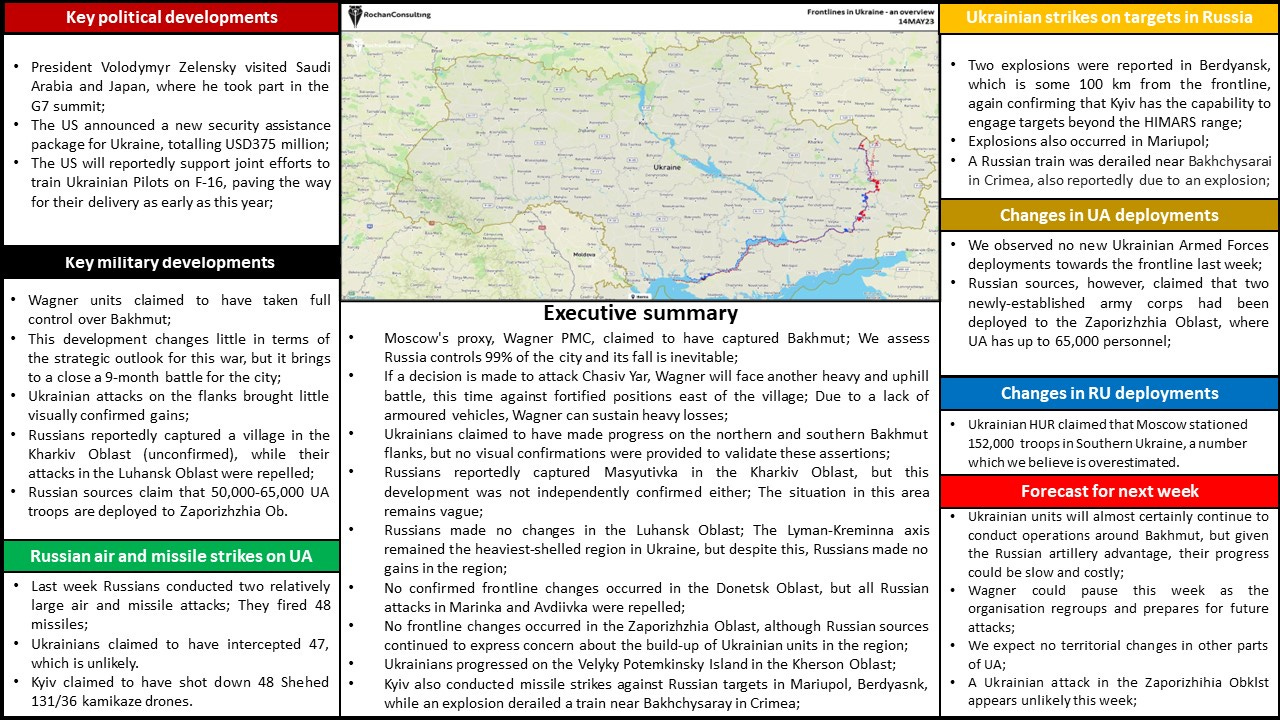

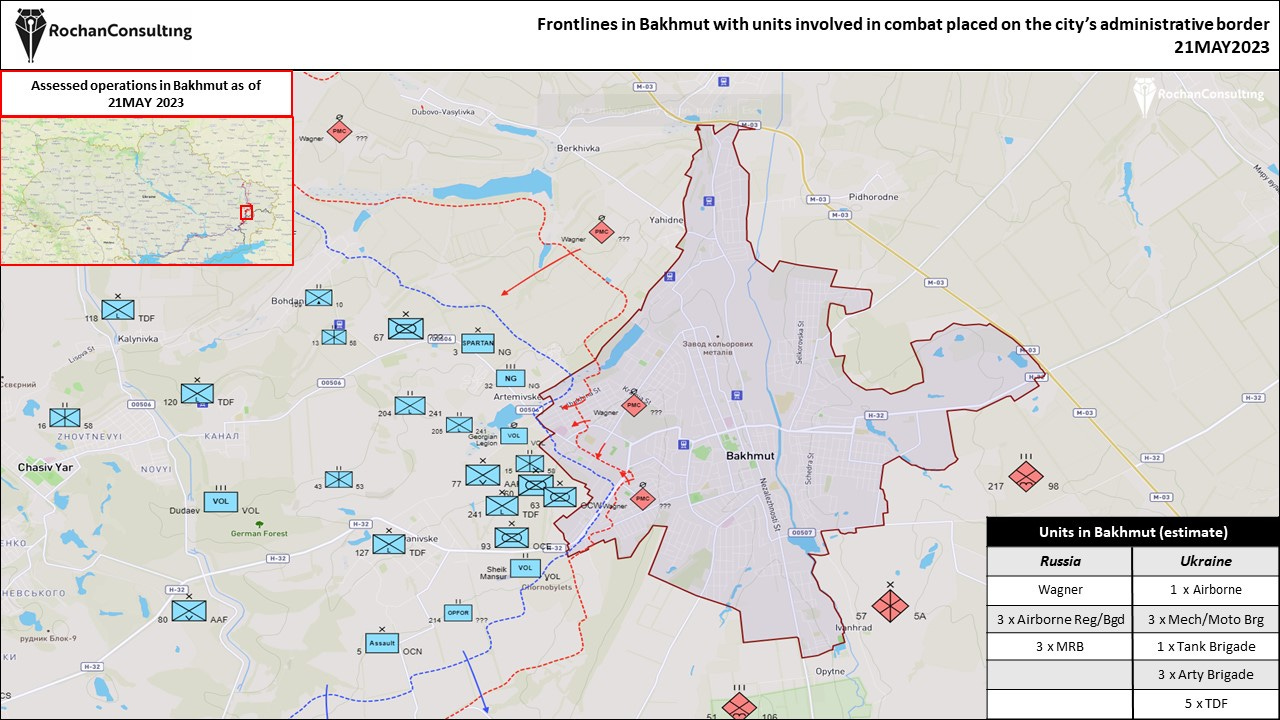

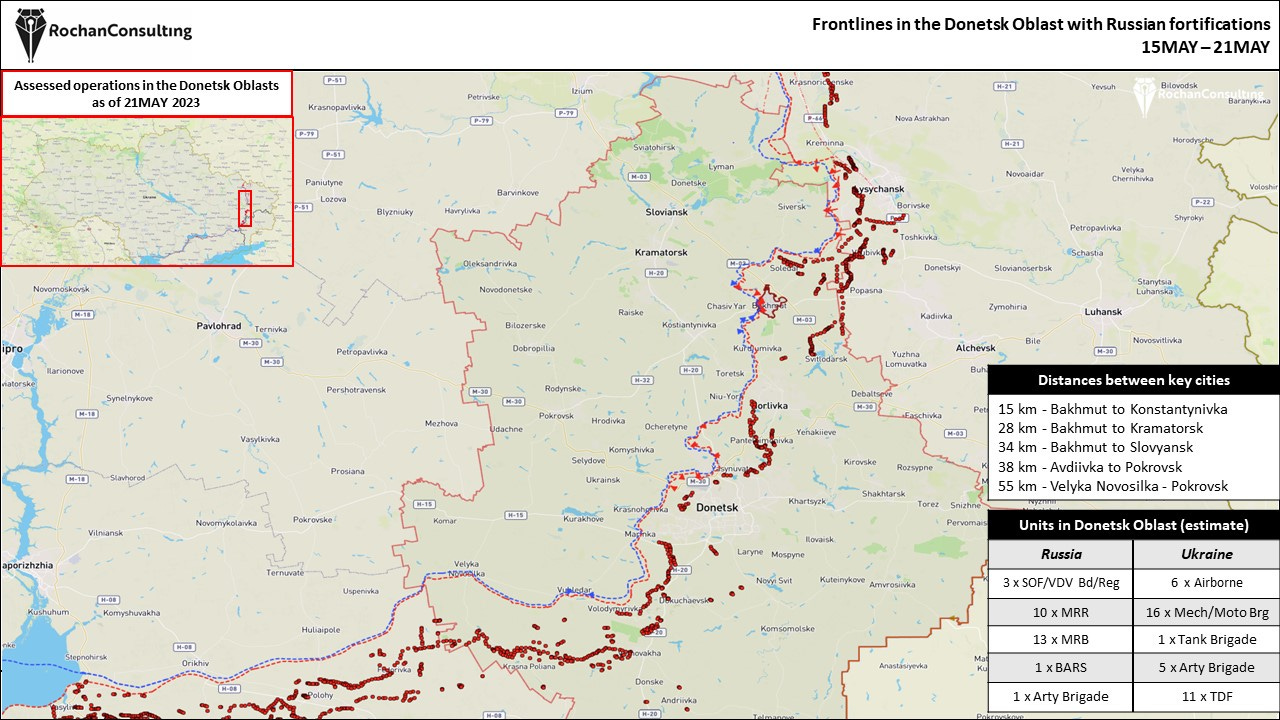
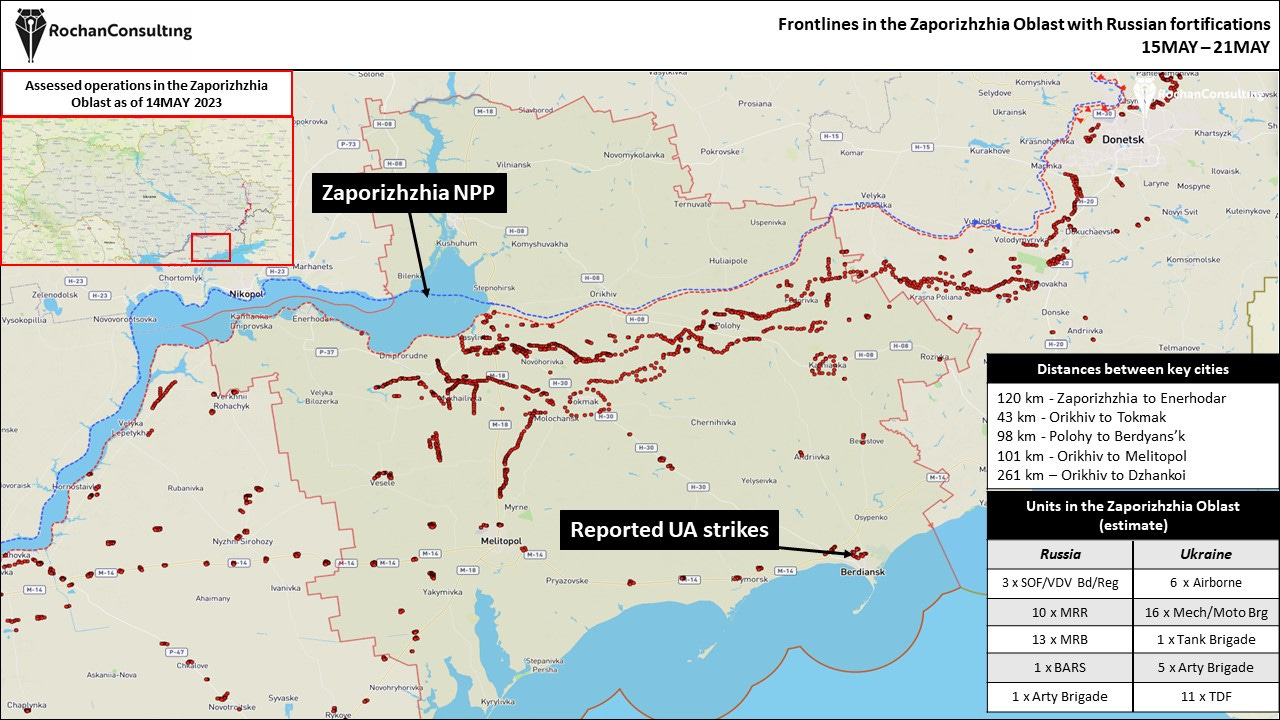
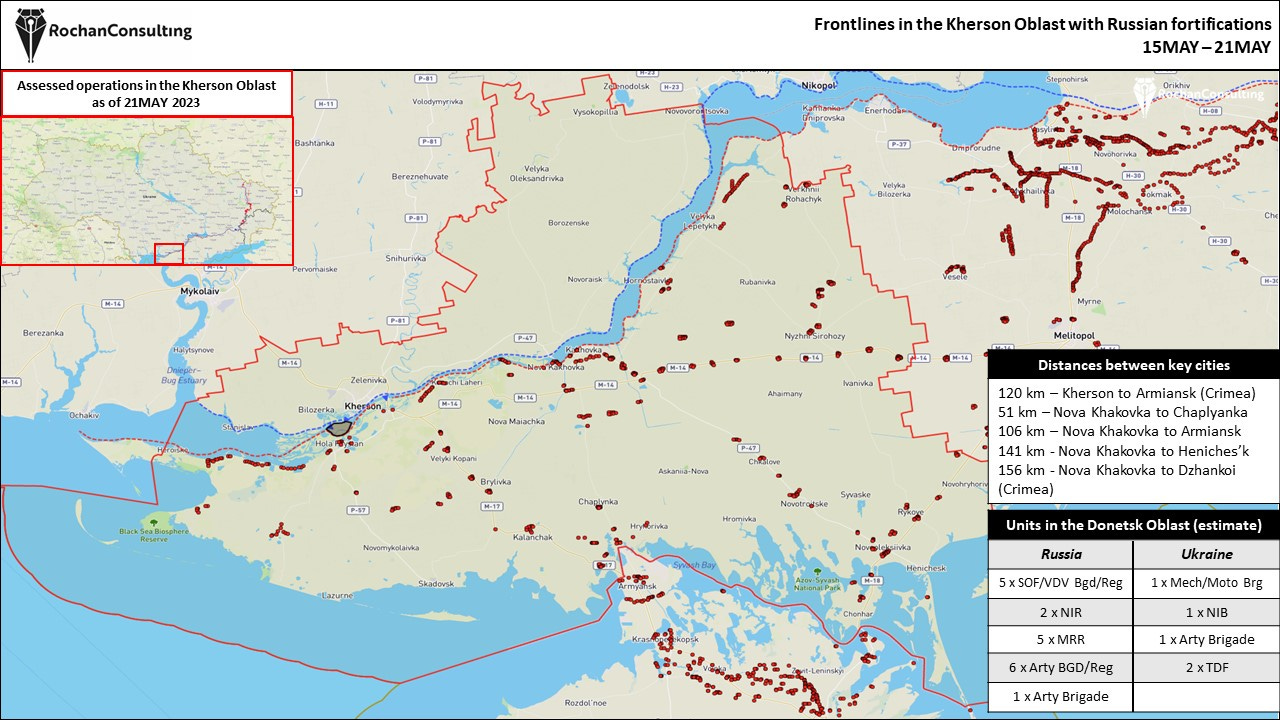
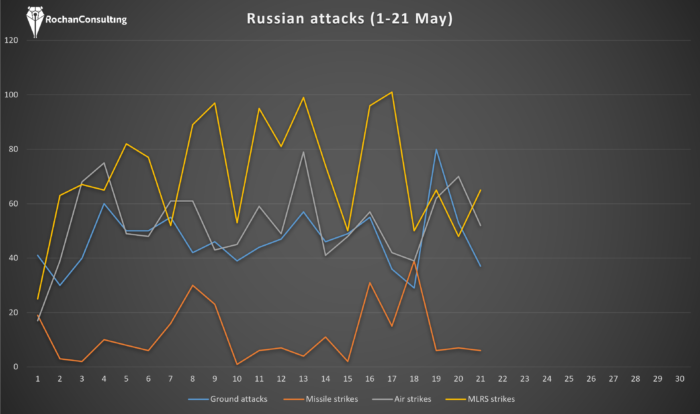
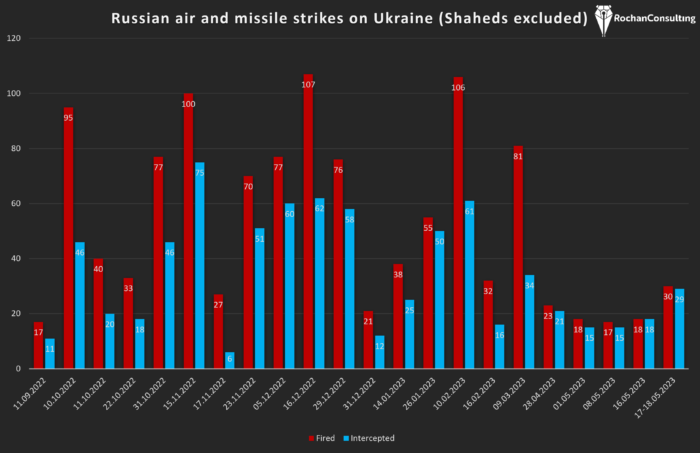
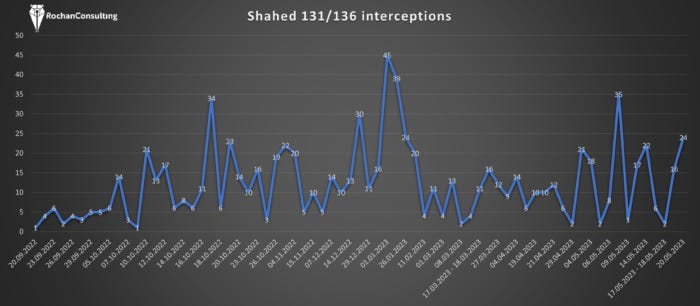

"Final score: 6/6 (100%)" is inconsistent with "Score:0.5/1"